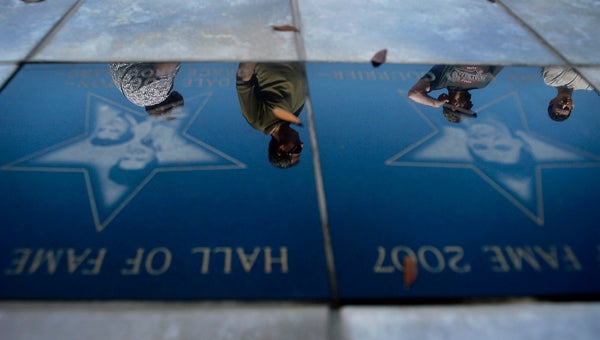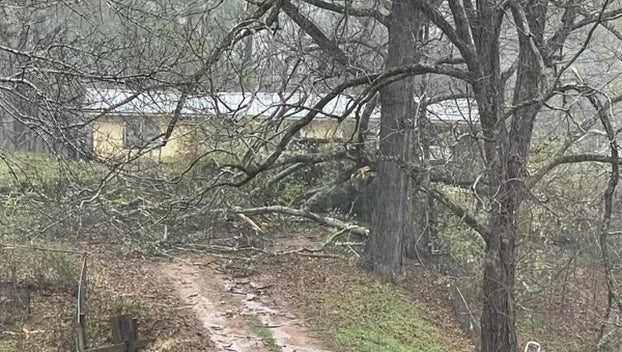Low-cost airline that flies out of New Orleans under fire for safety problems
Published 5:04 pm Monday, April 16, 2018
LAS VEGAS (AP) — Allegiant Air is fighting to reassure travelers and protect its reputation after renewed questions about safety at the low-cost carrier.
Safety experts say the numbers tell another story. There have been far too many aborted takeoffs, in-flight mechanical problems and emergency landings involving Allegiant planes in recent years.
The CBS program “60 Minutes” reported that Allegiant experienced more than 100 serious mechanical incidents on flights between January 2016 and October 2017.
“The number of inflight incidents that Allegiant has had speaks volumes, it is simply unacceptable,” Alan Price, a former chief pilot for Delta Air Lines, told The Associated Press.
Allegiant’s record of breakdowns appears related partly to the age of its fleet, particularly its MD-80 planes, which are nearly 28 years old on average and require more maintenance than newer planes.
The airline plans to retire all its MD-80s by the end of this year. In the meantime, they will continue to fly passengers from smaller airports to resort locations such as Las Vegas and Orlando, Florida.
Allegiant bases some of its aircraft in New Orleans and other airports across the country.
CBS said that Federal Aviation Administration records it got by filing a Freedom of Information Act request indicate that Allegiant flights were three-and-a-half times more likely to suffer an in-flight breakdown than flights operated by American, United, Delta, JetBlue or Spirit. The report also aired a long-running accusation by the Teamsters union local representing Allegiant pilots that the airline discourages pilots from reporting mechanical problems with planes. It also took aim at the FAA for failing to take action against Allegiant.
Allegiant issued a statement by Eric Gust, vice president of operations, charging that the CBS story told a “false narrative” about Allegiant and the FAA. He said the airline complies with all FAA requirements, and that any suggestion the airline muzzled employees “is offensive and defamatory.”
In a memo to employees, CEO Maurice Gallagher and other executives said they were ready “to fight back” against the network. They said the story was based on outdated statistics — similar allegations were raised in 2016 by the Tampa Bay Times in Florida — and was prompted by a pilot who was fired after ordering an emergency evacuation in which some passengers were injured. The pilot is now suing the airline, and one of his paid experts was featured prominently in the “60 Minutes” broadcast.
Price, the former Delta chief pilot, said firing a pilot for ordering an evacuation would be “so far beyond the bound as to constitute safety malfeasance.” He said the message to other Allegiant pilots was “that you better not ‘waste’ company resources in a conflict with safety,” which he said seemed to indicate that the airline was putting economics over safety.
Todd Curtis, an aviation-safety consultant, said he tells relatives to avoid the airline. The last time he did that for a U.S. airline of similar size “was ValuJet prior to the 1996 crash in the Everglades,” he said. Gallagher was a founder, director and executive at ValuJet.
Investors fear that negative publicity will drive travelers away from Allegiant. Shares of parent company Allegiant Travel Co. fell $4.65, or 3.1 percent, to $146.40 on Monday after dropping 8.6 percent Friday in anticipation of a damaging news report.
Airlines are frequently the subject of bad publicity, often around poor customer service. United Airlines was excoriated last year after officers bloodied and dragged a 69-year-old man off a plane to make room for a crew member, yet the incident seemed to have no effect on ticket sales.
It could be different for Allegiant, however, because the focus now is on whether it’s safe to fly on the airline.
“True or false, that was 30 minutes of horrible publicity for Allegiant,” Joseph DeNardi, an airline analyst for Stifel, said of the “60 Minutes” broadcast. “We’d be surprised if there isn’t an impact to bookings in the nearish term.”
Allegiant may have some cause to believe it can weather the storm, however. Most consumers compare prices when shopping for an airline ticket, and Allegiant has some of the cheapest fares around. It also has limited competition on many of its routes.
Allegiant buys used planes to keep costs down. As of Feb. 2, it operated 37 McDonnell-Douglas MD-80 planes and 53 Airbus A319 and A320 jets. The average age of its fleet was 18.5 years, but when the MD-80s are retired it will be in line with other U.S. airline fleets, which range from 5.1 years at Spirit Airlines to 16.7 years at Delta.
Older planes can be operated very safely, but they tend to burn more fuel and require more maintenance.
The attention on Allegiant has also renewed questions about the FAA’s performance.
The FAA increased its monitoring of Allegiant in 2016 because of labor tension with its pilots. In 2016, the agency moved up a routine review of the airline by two years after a series of aborted takeoffs and other safety incidents. FAA officials took no enforcement action against Allegiant and said they were satisfied that the airline was addressing problems found by inspectors.
FAA associate administrator of safety Ali Bahrami defended the agency’s performance by pointing to the lack of a fatal crash involving a U.S. airline since 2009, and said FAA regulation “has been very successful” in pushing airlines “to the highest level of safety.”
Since the 1990s, the FAA has stressed voluntary reporting of potential safety issues before taking punitive enforcement actions.
John Cox, a former airline pilot and now a safety consultant, said the FAA needs to examine the safety culture at Allegiant, but he dismissed the notion among FAA critics that the agency lets airlines police themselves. He said the FAA is being “a safety partner” to the airlines, and “it is working.”






